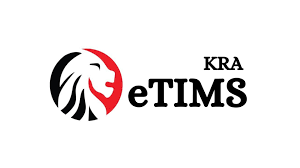Savings and Credit Co-operatives Societies (saccos) are an integral part of the Kenya financial services industry. With membership base of 15 million, this sector has a combined asset base of over US $10b. Commercial banks pale in comparison with only US $4b in assets (as at December 2020). Despite this enormous asset muscle, SACCOs continue to post a paltry return to their investors and exceeded by commercial banks at least by a factor of ten on return on assets. Just what is the saccos’ Achilles heel? We look at five factors that continue to plague the SACCO sector.
Technology
While it is commendable that saccos have largely adopted automation, there is need to go beyond ERP installation and digitisation of mundane tasks to a true technology embrace. Saccos need to adopt technology as a competitive advantage and not a redundancy defence mechanism. Various studies have shown that mobile banking remains the most preferred method of accessing banking services; this inclination ranks at higher than 80% in urban demographics. What is dumbfounding is that with this macro reality, saccos continue to push for traditional brick and mortar footprint as a primary expansion strategy (as opposed to a complimentary gap closure).
The SACCO movement barely scratches the surface to tap into the high mobile phone penetration, majority of them have limited use of technology to mobile money payment integration for settlement of loan instalments and mobilisation of member’s savings for non-check off members. SACCOs ought to adopt more technological solutions to match evolving customer preferences and stem off competition. Emerging technological trends such as data analytics, cloud computing solutions, digital identity and Fintech should be at the core of any competitive strategy.
Product innovation
A study commissioned by the Kenya digital lenders vindicated what everyone knew: digital lending is most popular with the youth. The study further revealed that 88% of mobile borrowers were extremely satisfied with the services convenience and would take out another loan. This is in spite of the fact that mobile lending is largely considered predatory; the flexibility of taking out a loan without the attendant burden of paperwork, approvals and time limitations far exceeds the cost of the facility.
Kenya demographic surveys, puts the country’s median age at 20 years; we are a young, blooded nation. Shockingly, our SACCOs banking products have roots in the 70s. With the proliferation of the digital lenders (currently at 120) coupled with a youthful population that is heavily inclined to the new innovations, SACCOs have with themselves a new competitor which they must be emphatic in their response in order to survive. Digital lending is an avenue for people to access loans without lending bureaucracy. Without product innovation, it is only a matter of time before a business goes belly up.
Corporate governance
There is an industry wide call for new leaders. Unfortunately, most of our SACCOs are still stuck with the dividends and interest payout centrality; this is not sustainable. What about the human equations? What about sustainability? The SACCO industry requires a new way of thinking and leading. Directors must regard themselves as having a duty of trust, not only to their membership but to the community at large. Whenever sustainability is mentioned, we rush to think about planting of trees and spending on CSR, whereas that is good, it’s only a fraction of what is needed. Directors must move in to confront governance issues on: employee empowerment, reporting and communication, corruption and human rights, community participation and commitment to policy.
Directors must be at the forefront of driving a holistic organisational change. Corporate governance is not an annual calendar event; it is a live everyday practise. The legal framework and policies under which SACCOs operate should be respected and impartially enforced. Boards must ensure effectiveness of laid down policies through regular review, preferably using an independent reviewer.
Investment and member diversity
A CEO of a leading SACCO was recently quoted to have said “We have no intention of diversifying investments. Instead, we are targeting more products. We stick to the saving principle of the cooperative movement because the core mandate of a SACCO is to invest in its members” To say this is callous is a slap on the wrist. Why a leader of this calibre would sink their head in the sand an ignore the broader macro developments on Government’s action in other sectors such as infrastructure, housing, manufacturing and Medicare defeats logic.
SACCOs have culturally affiliated themselves with activities centred from their original common bond. Whereas the common bond was a blessing in the earlier days. it has turned to be a curse primarily because of the inhibition of new thought processes and limitation in diversity of members and new ideas. Studies have shown that diversity breeds creativity and drives innovation. This is the very same thing that SACCOs need, help in solving problems and meeting customer needs in new and exciting ways.
In a competitive sector, working on continuous investment in fostering a multi-dimensional and inclusive organisation will make you stand out to the right clientele. Diversity should be an important part of membership recruiting process in order to broaden revenue sources, diversify the savings pool and reduce on risk concentration prevalent in common bonds. Foster integration from a wider catchment area will also invariably bring the added benefit of innovative product offering and drive the sustainability agenda forward.
Fraud
A study by SASRA indicated that SACCOs lost upto $1m to fraudulent schemes in 2021; whereas fraud is a wider malfeasance in the banking industry, SACCOs are disproportionately hit; 53% of all SACCO frauds are internal hack jobs. It is not practically possible to have an absolute immunity against fraud and unethical, this is a moral hazard but it can be mitigated on.
SACCO regulations require that there should be supervisory committee tasked with the responsibilities of ensuring the management team installs adequate safeguards on the assets. A properly functioning supervisory committee is a first line of defence against fraud and other malpractices. Supervisory committee members are voted into office to aid in design and implementation of internal control mechanisms that would be a deterrent to overture schemes; unfortunately, delegates do not usually consider the gravity of the role and only end up appointing figure heads instead of professionals. SACCOs need to move to install the right capabilities into their structures.
The enormous potential of the SACCO industry should not be let to continue idling in waste, lets implement a few solutions to rejig and bring excitement to the sector.














